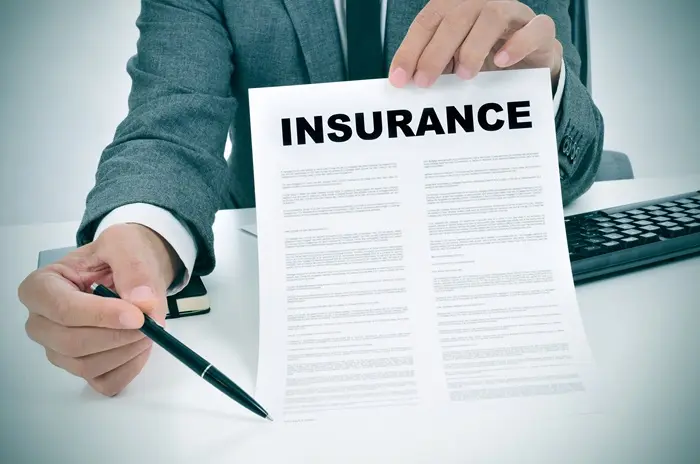Insurance plays a crucial role in providing financial protection and peace of mind. Whether it’s health insurance, auto insurance, or any other type, understanding the details on your insurance card is essential. Among the most critical pieces of information on an insurance card is the policy number. This article will explore what the policy number is, its importance, how to locate it, and how it is used.
What Is a Policy Number?
Definition of a Policy Number
A policy number is a unique identifier assigned to an insurance policy. This number is crucial for both the insurer and the insured, serving as a reference for all transactions and communications related to the policy. The policy number is typically a combination of letters and numbers and can vary in length depending on the insurance company.
Purpose of a Policy Number
The policy number serves several key purposes:
Identification: It identifies the specific insurance policy and links it to the insured individual or entity.
Administration: Insurance companies use the policy number to manage the policy, track payments, claims, and any changes made to the coverage.
Claims Processing: When a claim is filed, the policy number is used to verify coverage and ensure that the claim is processed correctly.
Where to Find the Policy Number on an Insurance Card
Location on Health Insurance Cards
On health insurance cards, the policy number is often prominently displayed. It is typically located near the top of the card, below the name of the insurance provider. It might be labeled as “Policy Number,” “Member ID,” or “ID Number.” Some health insurance cards may also display a separate group number, which identifies the employer or organization that provides the insurance plan.
Location on Auto Insurance Cards
For auto insurance, the policy number is usually found in the middle or bottom section of the card. It might be labeled as “Policy Number” or simply “Policy.” In addition to the policy number, auto insurance cards often include the vehicle’s information, such as the make, model, and VIN (Vehicle Identification Number).
Location on Other Insurance Cards
The location of the policy number can vary depending on the type of insurance. However, it is generally easy to locate and clearly labeled. If you are unsure, look for a number that is unique and likely consists of a mix of letters and numbers.
See Also: 7 Best Dental Insurance for Braces
Importance of the Policy Number
Filing Claims
The policy number is essential when filing a claim. Whether it’s a health insurance claim for a doctor’s visit or an auto insurance claim for an accident, the policy number ensures that the claim is matched with the correct policy. Without this number, the processing of claims can be delayed or even denied.
Verifying Coverage
Healthcare providers, auto repair shops, and other service providers often require the policy number to verify your coverage. This number allows them to confirm that you have an active policy and determine the extent of your coverage.
Making Payments
When making payments for your insurance premium, the policy number is often required. It ensures that your payment is applied to the correct policy. Many insurance companies allow you to pay online, by phone, or by mail, and in each case, the policy number will be needed.
Communication with the Insurer
Any communication with your insurance company, whether it’s about a claim, a coverage question, or a policy update, will typically require the policy number. It helps the insurance company quickly access your policy details and assist you more efficiently.
How Policy Numbers Are Assigned
Structure of a Policy Number
The structure of a policy number can vary depending on the insurance company. Some policy numbers are purely numeric, while others are alphanumeric. The structure may include information about the type of insurance, the region, or the specific agent who issued the policy.
Internal Use by Insurance Companies
Insurance companies assign policy numbers based on their internal systems. These numbers are generated automatically when a new policy is created. The policy number is stored in the insurance company’s database and is used to manage all aspects of the policy, from billing to claims processing.
Changes to Policy Numbers
In some cases, a policy number may change. This can happen if you switch to a different insurance plan within the same company or if the company undergoes a merger or rebranding. If your policy number changes, your insurance company will notify you and provide a new insurance card with the updated number.
What to Do If You Lose Your Insurance Card
Steps to Take
If you lose your insurance card, it’s important to act quickly to obtain a replacement. Contact your insurance company as soon as possible. They will issue a new card with the same policy number unless there has been a change to your policy.
Temporary Proof of Insurance
In some cases, you may need proof of insurance before you receive your replacement card. Many insurance companies provide digital insurance cards that you can access through their mobile app or website. You can also request a temporary card to be emailed or faxed to you.
Importance of Keeping Your Policy Number Secure
Your policy number is a sensitive piece of information, similar to your Social Security number or bank account number. It’s important to keep it secure and only share it with trusted entities, such as healthcare providers, repair shops, or your insurance company.
Common Issues Related to Policy Numbers
Misplacing the Policy Number
Misplacing your insurance card or forgetting your policy number can cause delays in receiving services or processing claims. It’s a good idea to keep a copy of your insurance card in a safe place and consider storing your policy number in a secure digital format.
Incorrect Policy Number on Documentation
If you notice an incorrect policy number on any documentation, such as a bill or a claim form, contact your insurance company immediately. An incorrect policy number can lead to issues with claims processing, and it’s essential to have it corrected as soon as possible.
Multiple Policy Numbers
In some cases, you may have multiple policy numbers if you hold more than one type of insurance with the same company. For example, you might have one policy number for your auto insurance and another for your home insurance. It’s important to keep track of each number and ensure you use the correct one when necessary.
Conclusion
The policy number on an insurance card is more than just a random set of digits—it is a vital part of managing and utilizing your insurance coverage. From filing claims to making payments, the policy number is central to every interaction you have with your insurance company. Understanding what the policy number is, where to find it, and how it is used can help you navigate your insurance with confidence. Always keep your policy number secure and readily accessible, as it is a key element in ensuring that your insurance coverage works smoothly when you need it most.
[inline_related_posts title=”You Might Be Interested In” title_align=”left” style=”list” number=”3″ align=”none” ids=”3164,3095,3092″ by=”categories” orderby=”rand” order=”DESC” hide_thumb=”no” thumb_right=”no” views=”no” date=”yes” grid_columns=”2″ post_type=”” tax=””]
































